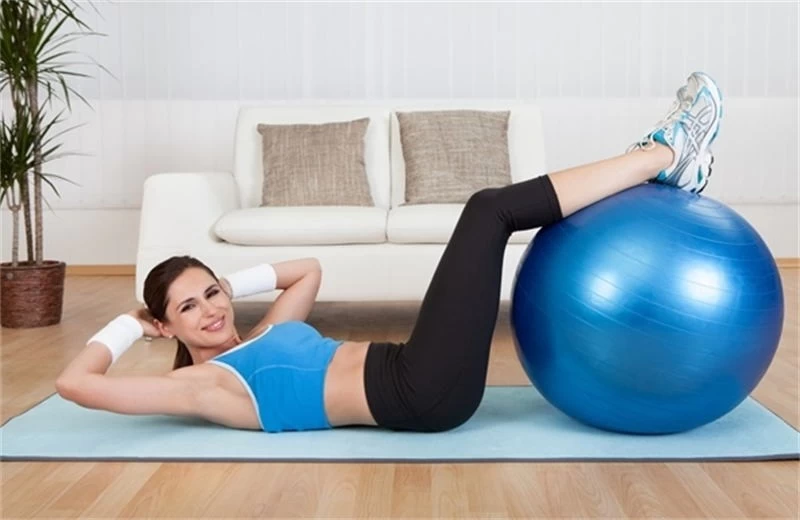You generally see it early into the new year – one by one, the chairs in your office begin to be replaced with enormous inflatable gym balls.
"Oh, it'll activate your core," proponents of the trend will tell you. "You have to use your abs to sit up straight, so it's like working out all day without having to go the gym."
The claim, in theory, makes sense: you undeniably use your abs to sit on any chair without a backrest more than when you sit in your lumbar-supported, ergonomic, OHS-recommended officemaster 5000.
But just because you can, does that mean you should?
According to the scientific research, the answer is pretty much a resounding no.
In a landmark 2006 study researchers from Waterloo University in Canada found that while sitting on an exercise ball did increase the amount of muscles used, it was simply too uncomfortable to keep up for any period of time.
This result was repeated later that year, and again in 2009 – with every experiment revealing that while a ball did theoretically "turn on" your abs, it was just too damn uncomfortable to get any work done.
As the researchers discovered time and time again, humans are inherently lazy: no matter whether the participants were sitting on a Swiss ball or an office chair, they all naturally reverted to their classic "slumped over" posture if given enough time.
"Prolonged sitting on a stability ball does not greatly alter the manner in which an individual sits, yet it appears to increase the level of discomfort," wrote the researchers.
"Therefore, it is important to fully explore a new chair design and consult scientific research before implementing its use."
It's a sentiment that many agree with, but replacing your office chair with a blow-up ball isn't just annoying for your spine – it's annoying for your HR department, too.
According to WorkSafe Victoria – who put out an entire guide as to why people shouldn't be planting their buttocks on gym equipment when they’re at work – using a fitness ball as a chair could constitute as a workplace hazard.
"There is little, if any, evidence of scientific trials or studies to demonstrate that the effect fitness balls have in exercise and training makes them suitable for use on a daily basis as a seat at work," they write on their website.
"Providing fitness balls in a workplace may place the employer at risk of introducing a hazard. An employer needs to assess the risk to health and safety where the balls are used, or planned to be used, as seating at work."
The real answer is simply that we need to sit less overall
I know, I know, it's the most annoying fitness preach of all: instead of debating over what we're sitting on, we really need to think about how we can sit less overall.
According to APA Sports Physiotherapist Aidan Rich, sitting in an office chair – no matter how ergonomic it is – is effectively forcing our body into some kind of "halfway" movement pattern between standing and squatting.
"Prolonged sitting can cause some dysfunction around joints, like the low back and hip," Rich told Coach earlier this month.
"These joints are designed to move, and be upright, so having your back and hip in a flexed position for hours at a time can contribute to imbalances, stiffness and problems with activity."
Thankfully, the solution to cure your dead office butt needn't require you to quit your job – just getting up periodically and walking to the office kitchen or toilet is enough to revive even the sleepiest behind.
"Prolonged sitting (more than 30 minutes or so) appears to be more harmful than the total amount of sitting throughout the day," advises Rich.
"So it's important to try and break up sitting where possible. This can be done by standing during phone calls, having standing or walking meetings, or visiting someone face to face rather than emailing them."




